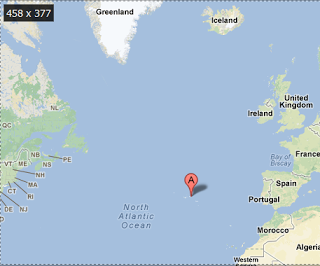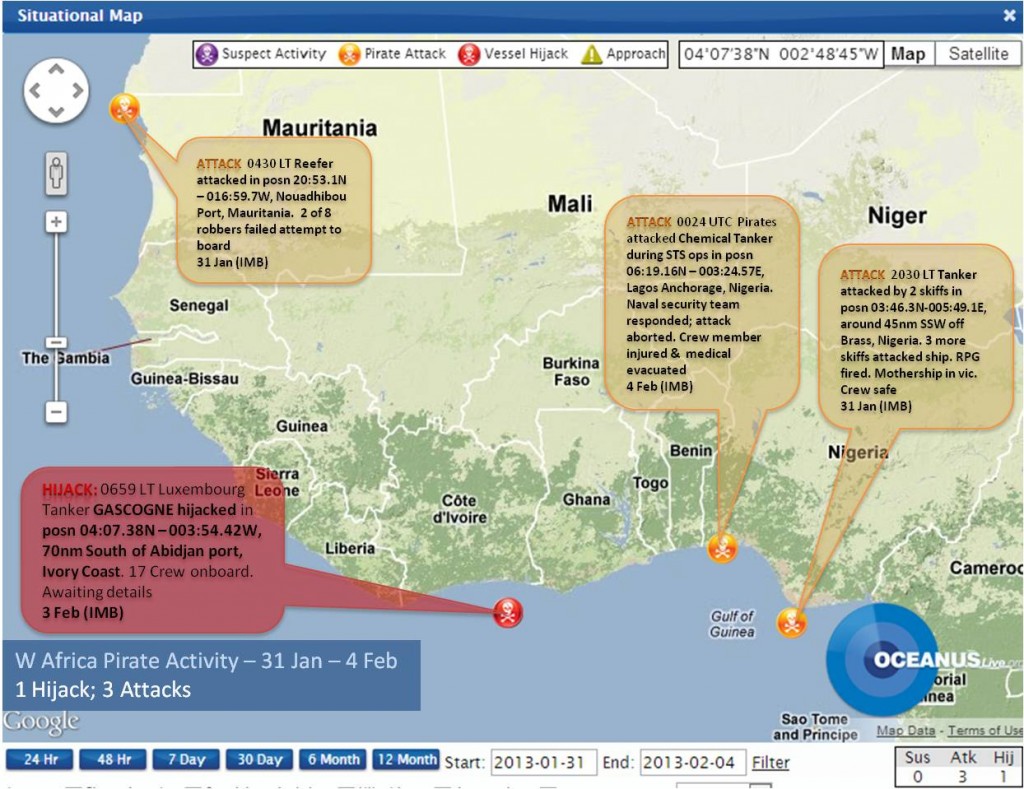An Important Stop
On his way back from a trip to South America in the summer of 2012 China’s Premier Wen Jiabao made the strangest possible stopover. He landed on an American-Portuguese air base on the Azores. The Lajes Field Air Force Base is one of many on the Pentagon’s list to be reduced or scrapped. In the National Review, anti-China hawk Gordon C. Chang speculated whether Wen Jiabao’s stop on the Azores island Terceaira could have a strategic-military context:
“Terceira, however, has one big attraction for Beijing: Air Base No. 4. Better known as Lajes Field, the facility where Premier Wen’s 747 landed in June is jointly operated by the U.S. Air Force and its Portuguese counterpart. If China controlled the base, the Atlantic would no longer be secure. From the 10,865-foot runway on the northeast edge of the island, Chinese planes could patrol the northern and central portions of the Atlantic and thereby cut air and sea traffic between the U.S. and Europe. Beijing would also be able to deny access to the nearby Mediterranean Sea.”

However, terror-filled visions of Chinese aerial patrols over the Atlantic are out of place. How would the aircraft, including personnel and equipment, get there? And what types of aircraft could perform such feats? China’s military is not blessed with too many long-range bombers or maritime patrol aircraft. Even if they had such capabilities, why should China try to send men and material, strongly needed in the Indo-Pacific, to the other end of the world? From these current practical limitations it would be easy, but wrong, to stop the discussion about China’s role and potential operations in the Atlantic.
In order to show its flag in the Atlantic, it would be sufficient for China at this point to use the airport and the ports for, let’s say, a “scientific research station.” It is in a similar manner that the British, French, and others pursue their interests in overseas territories. Incidentally, such a station would be an excellent opportunity for electronic espionage – signals intelligence (SIGINT). Furthermore, as a former emergency runway for the Space Shuttle, Lajes Field might also be of interest for China’s space program.
Into the Heart of NATO
This new development in the territory of a NATO country must be seen in the context of China’s efforts in another NATO member, Iceland. China has heavily invested in the country’s ports and infrastructure because Beijing in the long-term expects an ice-free Arctic to open new shipping routes. Meanwhile in Greenland, whose foreign policy is administered by NATO member Denmark, vast quantities of important resources have also caught China’s eye and spurred development plans.
China is attempting to protect and project its strategic interests in the Atlantic and is doing so within NATO countries. This broader trend should not be dismissed without broader analysis. Such moves – note the plural – are something entirely new.
As stated above, the idea of an operational Chinese naval and aerial presence appears bizarre. Why should China try to station hardware, either civil or military or dual-use, on the other side of the world in the midst of a “hostile inland sea”? Viewed strategically, however, and it’s apparent that such a move would be a stab in NATO’s heart. In Iceland, China’s concerns (so far) are civilian and economic projects, but if the Portuguese government allowed the Chinese, in whatever form, a permanent presence on the Azores, it would be a strategic disaster.
What would happen if the U.S.’ Indo-Pacific antagonist settles into the home territory of the Alliance, in which the U.S. has since 1949 set the tone? The signaling effect within and outside NATO would be devastating. Obviously, NATO has never faced only friendly states, as members’ borders were often the literal front lines of the Cold War. But there are few parallels with the potentially hostile (a designation based on privately held beliefs of China’s intent and cyber efforts) power in the midst of the Alliance’s area. Would NATO Europe, as it is now termed in U.S. parlance, permit such a development by acquiescence or inaction, NATO Europe’s image in Washington would reach a new low.

Some of you may be thinking, but doesn’t the Malacca Strait, Gulf of Aden, Suez Canal, and Strait of Gibraltar separate China from the Atlantic? The answer again is due to the developments in the Arctic. In the long term, China’s shortest way into the Atlantic no longer leads through the bottlenecks of the Indian Ocean, but via the Arctic, once the Northeast Passage is ice-free. Regardless, it requires little to imagine Chinese ships, after a stop at the newly opened port in Pakistan’s Gwadar, sailing by the Horn of Africa and through the Mediterranean for a short visit further into the Atlantic. Due to the evacuation of Chinese nationals from Libya in 2011 we could see a recognized requirement for presence for the first (and not last) time.
Heading South
Pop Quiz: Where have Chinese pilots performed their first takeoffs from an aircraft carrier? In the Pacific? Wrong. In the South Atlantic? Right. It is on the Brazilian carrier Sao Paulo that Chinese pilots trained for takeoffs and landings. With the initiation of such military ties, it’s possible that the Chinese pilots and their Brazilian trainers will someday have the opportunity to meet again alongside their carriers during port visits and joint exercises.
Such a vision may or may not come to pass, but China’s interest in the South Atlantic is nothing new, due to Nigeria’s and Angola’s oil, construction projects across the continents, booming markets, and vast extractive industries. Potential sites for Chinese naval bases in the South Atlantic are already discussed openly. If somewhat of a new development for the North Atlantic, Chinese interest in the Azores fits into the picture of China’s pivot to Africa further to the south.
Despite all the speculation: Calm down
China is years or decades away from establishing military superiority in expeditionary operations. China’s military has more than enough work to do in the East and South China Sea working under the slogan “Learning by Doing“. It remains to be seen if and how far the dispute with Japan about the Diaoyu/Senkaku Islands escalates, which could seriously alter China’s naval development trajectory. Further, the Chinese naval presence off the Horn of Africa since 2008 only exists, because it is welcomed by the U.S., India, and other countries in the fight against piracy.

For the foreseeable future, what China does in the Atlantic will have zero operational military relevance. The strategic and political implications are what matters. In London, with its own not-inconsiderable South Atlantic interests, and in Paris, these geopolitical developments will be watched closely. Washington, London, and Paris are likely able to bring enough pressure to bear on Lisbon that China will not settle on an island in NATO’s heart. The unknown variable is debt. Will Beijing buy so many Portuguese bonds that Lisbon cannot say no? Or will Europe exploit Portugal’s dependence on Euro rescue funds for its geopolitical aims to eliminate any designs China has on the Azores? We will see.
What to do?
There is a lot to doubt about China’s intentions. The growing nationalism, the behavior in cyberspace, and the more aggressive stance in the East and South China Seas speak for themselves. Nevertheless NATO Europe must focus on cooperation rather than confrontation. The reality is that the U.S. and NATO have already developed templates for successful cooperation with China’s navy off the Horn of Africa. Such measures should be continued and expanded, for example with counter-piracy, humanitarian assistance, and counter-terrorism efforts. However, the reality is that China is also developing its navy as an instrument of Indo-Pacific power projection, which will have the side-effect of enabling it to pursue its interests in the Atlantic stronger than before.
But there is no reason for doom and gloom if today in the capitals of NATO Europe the right geostrategic agenda is set and pragmatic decisions are made. It is all on Paris and London.
Felix Seidler is a fellow at the Institute for Security Policy, University of Kiel, Germany and runs the site Seidlers-Sicherheitspolitik.net (Seidler’s Security Policy).
Follow on twitter: @SeidersSiPo




